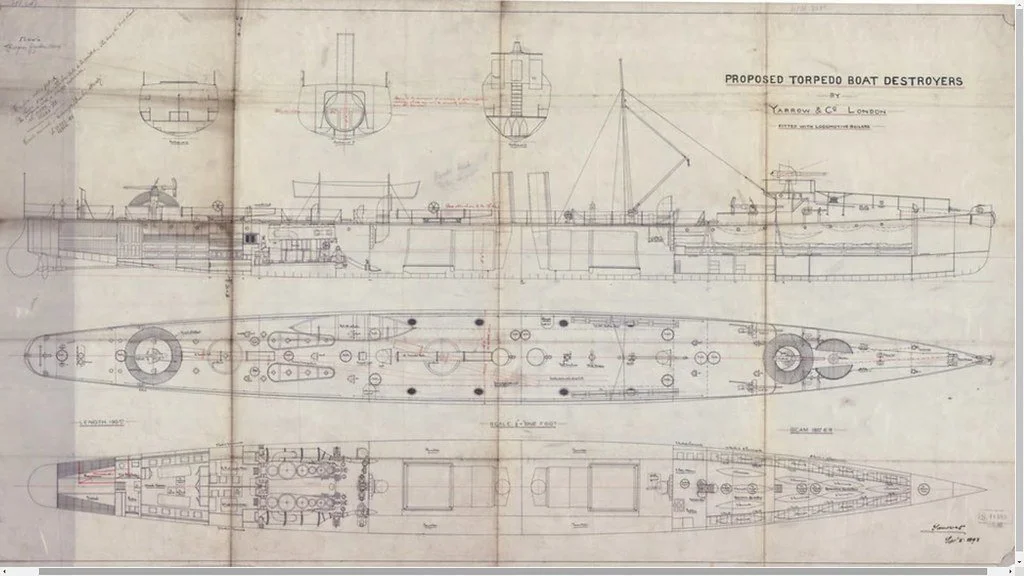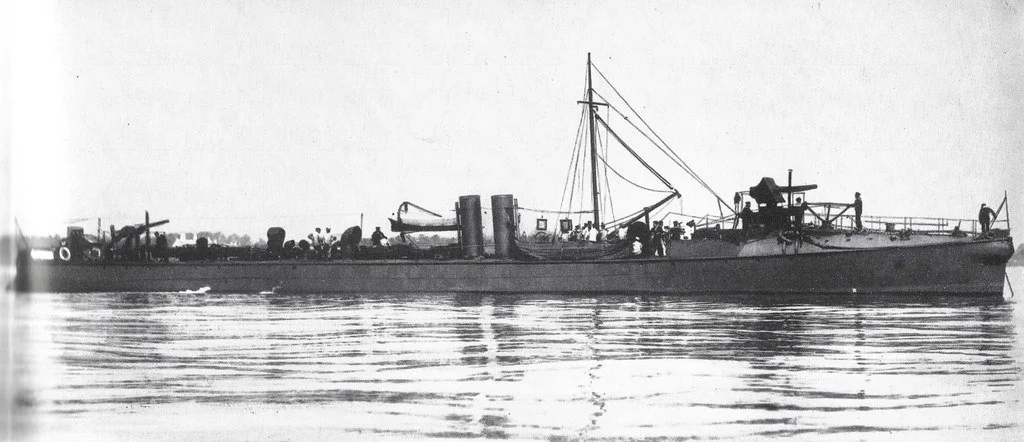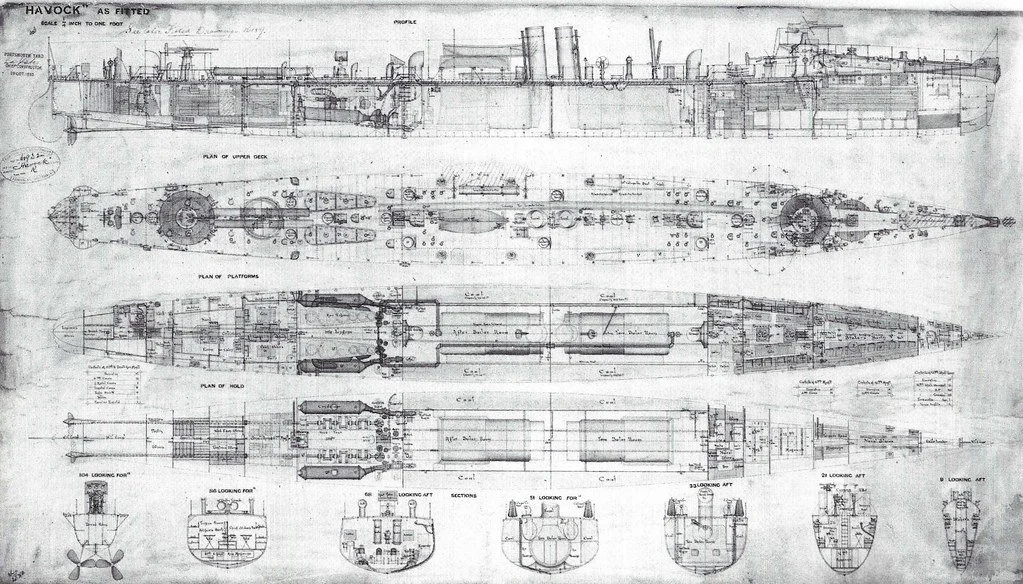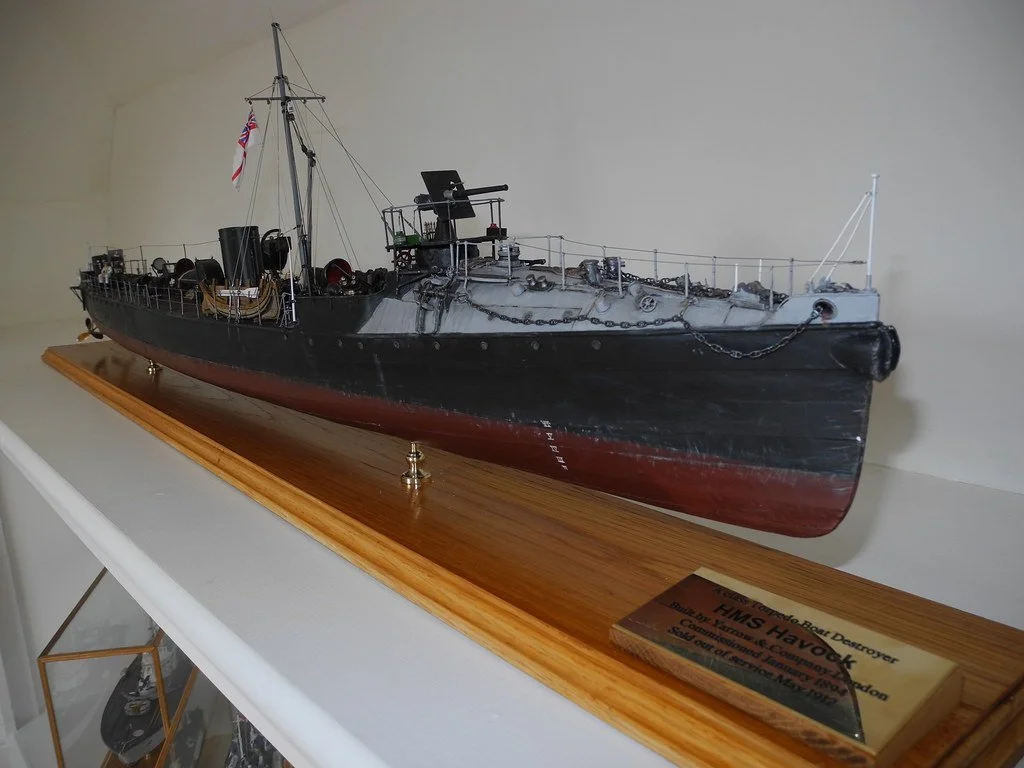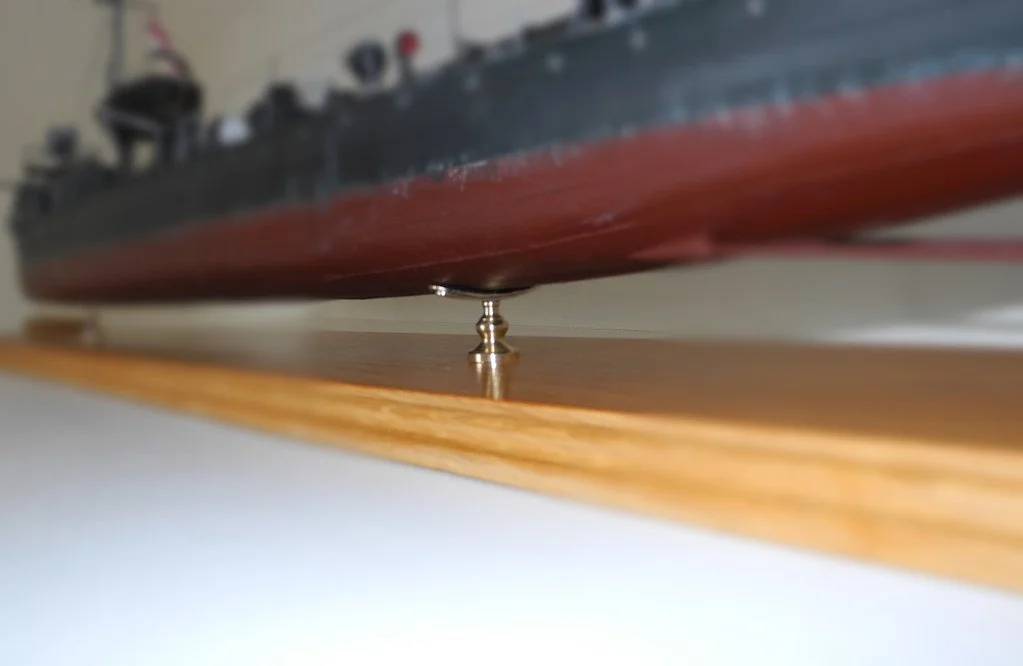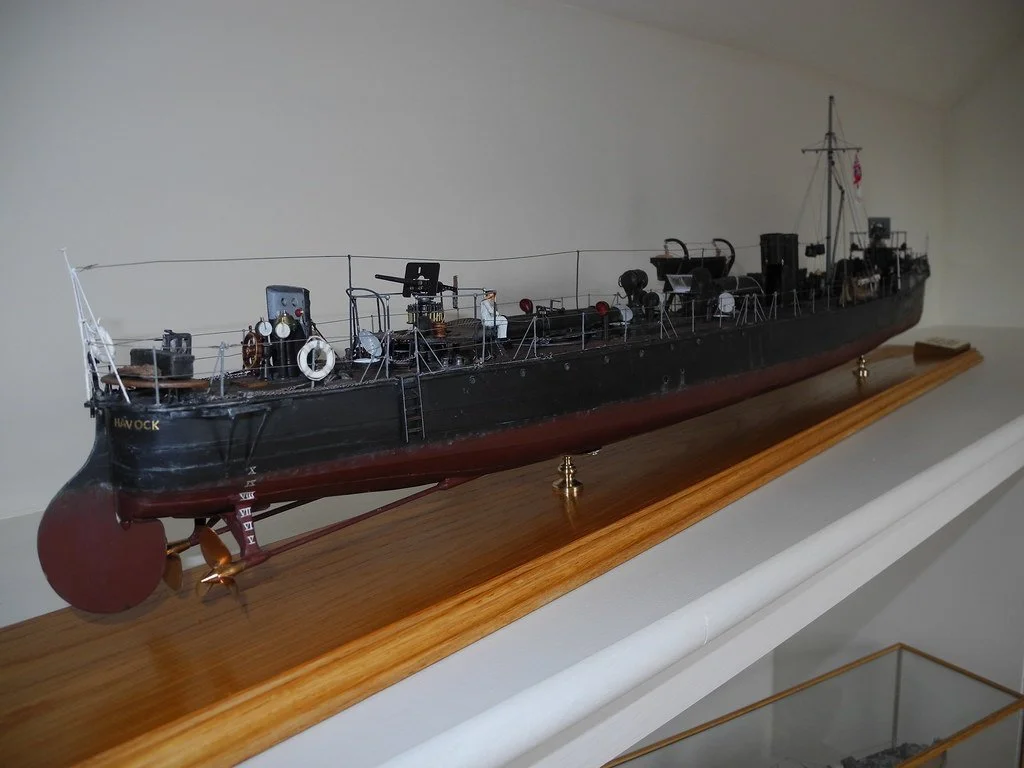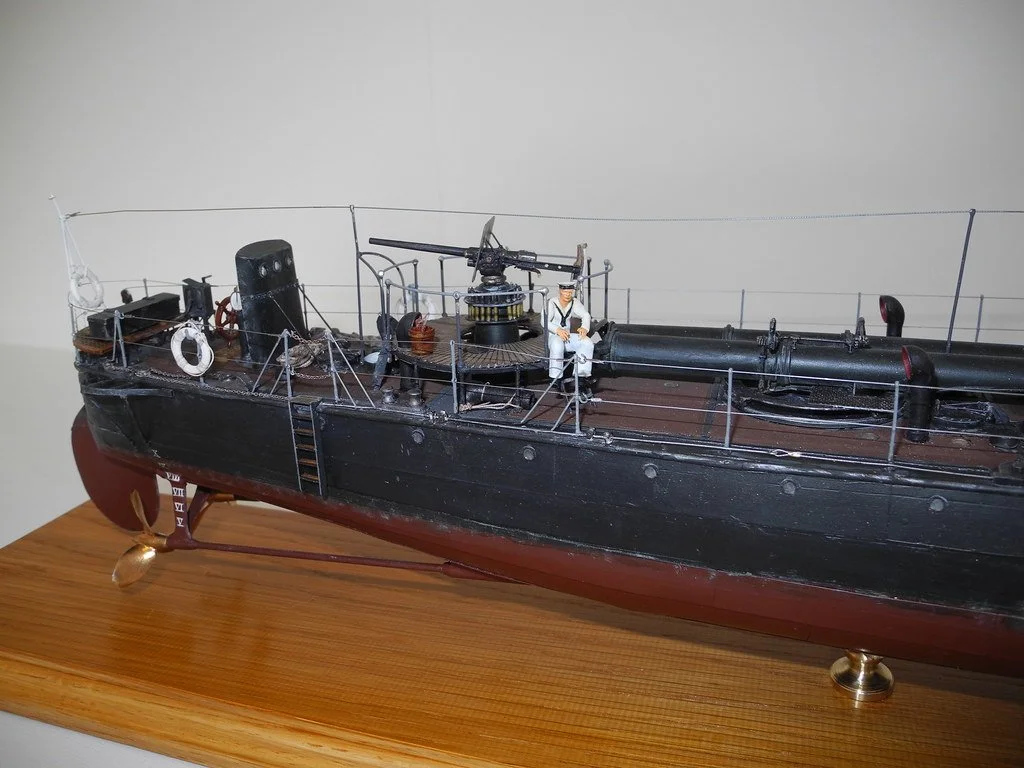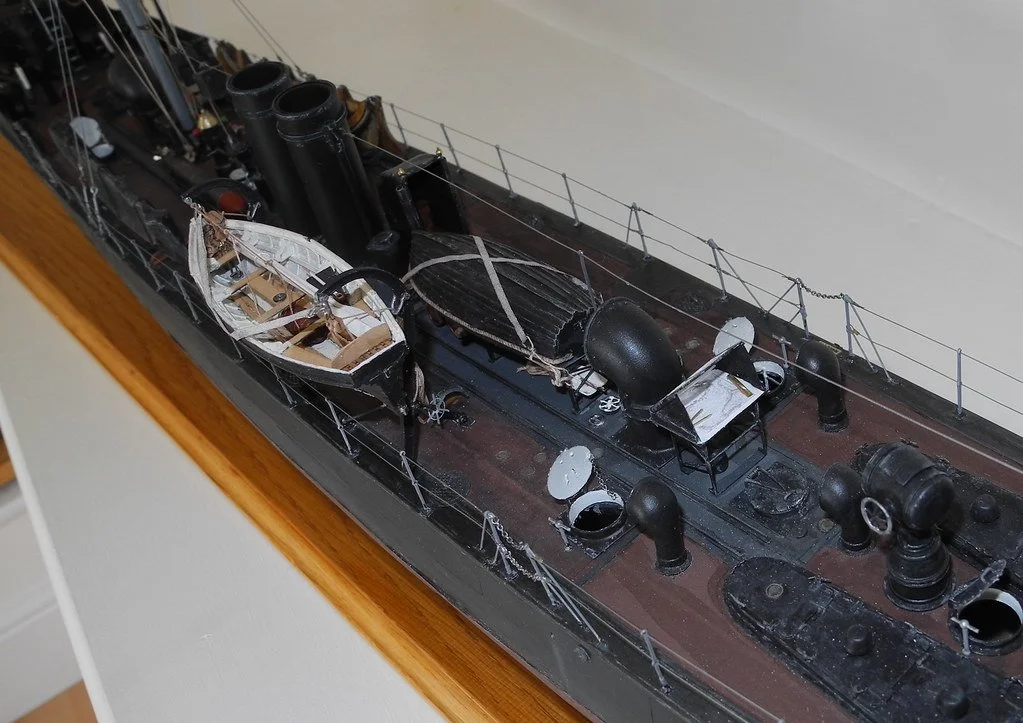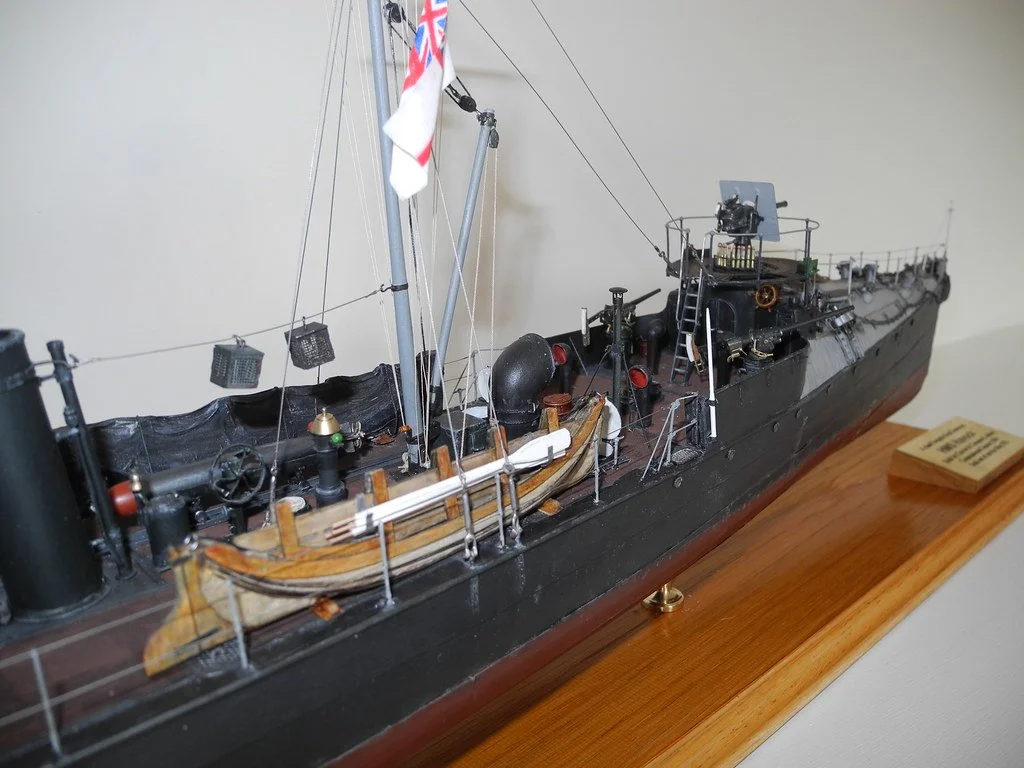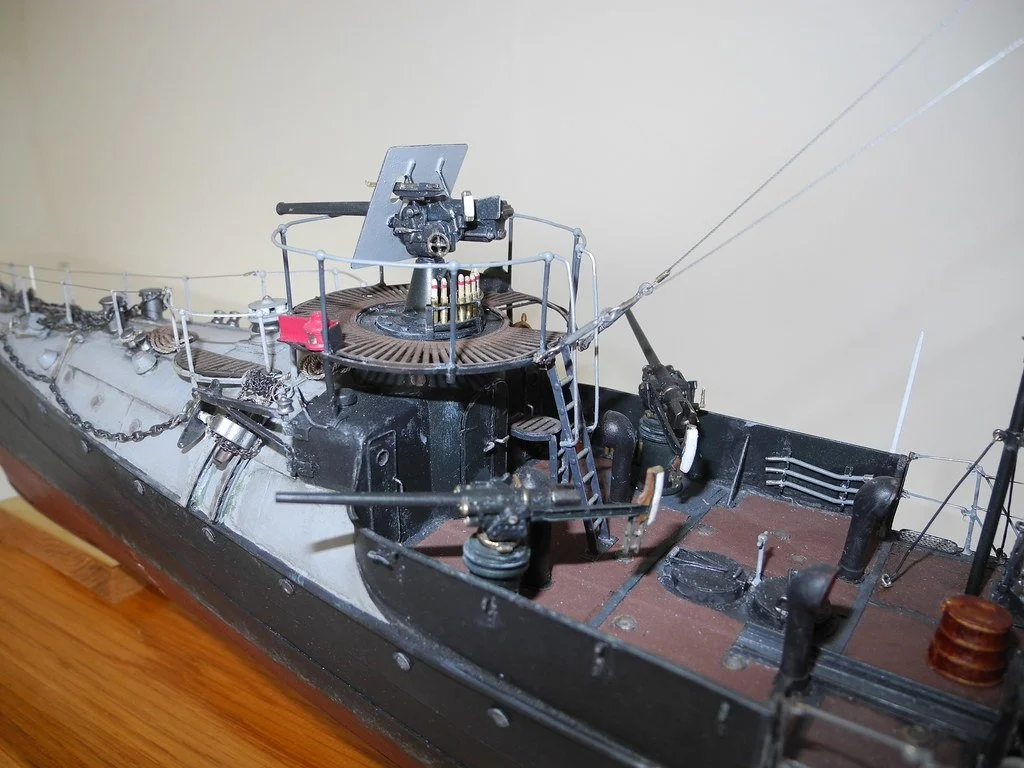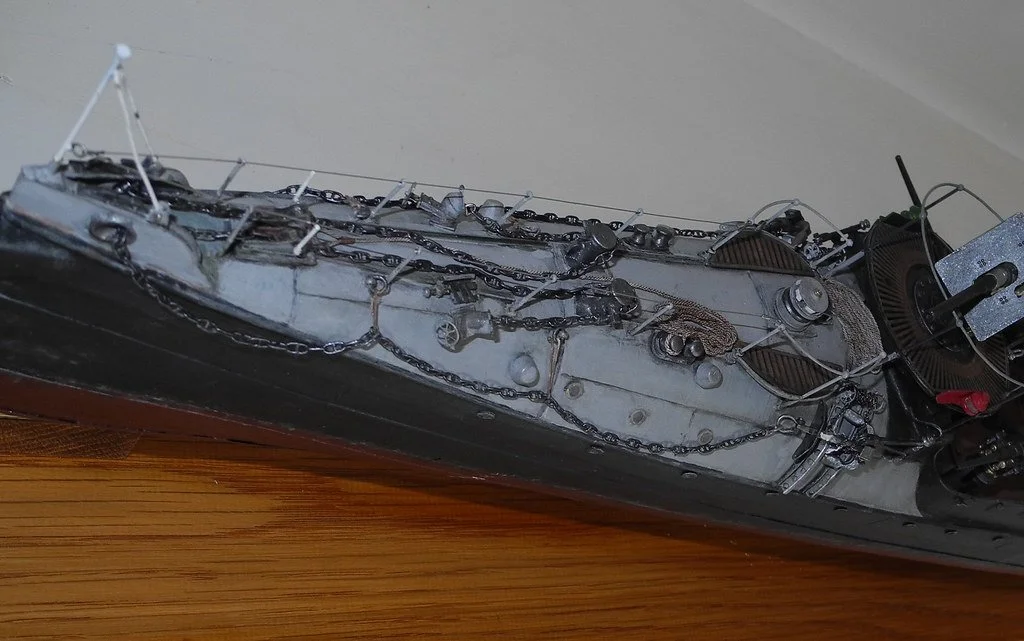A class Torpedo Boat Destroyer - HMS Havock 1893
I bought David Lyon's book, "The First Destroyers" 20 years ago and since reading it, I knew I had to make one. The book contains a drawing of HMS Velox from 1904, but interestingly, also contained 3D isometric drawings of HMS Havock, the first of the type commissioned in 1894. Havock and her sister Hornet were Yarrow boats, built at Poplar on the Thames and were shorter by ~20ft than the other A class Torpedo Boat Destroyers. As I build at the relatively large scale of 1/4inch to the foot, length matters, I have to find a place for the finished model..
According to Edgar March, who wrote the definitive book on British Destroyers, Fisher asked Alfred Yarrow to propose a class of vessel that would surpass the performance of the French torpedo boats sitting a few miles across the English Channel. The outline plan he came up with is easily available on the internet, see below.
Armed with a QF 12 pdr, 3 QF 6pdrs and 3 18 inch torpedo tubes, this concept design was the start of a class of ships later just known as Destroyers
After successful speed trials, Havock was accepted into the navy in January 1894
Lyon's book included in its illustrations, a reproduction of Havock's as-fitted drawing which is held in the IWM collection at the Brass Foundry in Woolwich. I bought a full size scan of this and it is this single drawing that started the project. Regrettably, there are no lines or shell expansion drawings available, but the lines are relatively straight forward and the sections on this plan were sufficient to work them out, with the help of a half scale block model I made.
The construction is plank on frame, plated in aluminium. All the fittings are brass, scratch, turned or etched. The boats are tissue and PVA over a mould, planked in card with wood fittings. The ship is mounted on a turned pillars set into a French polished, solid oak base board, with engraved name-plate from Engraving Studios who turn it round in a couple of days for ~£16 inc p&p.
The model is 3' 10" long. It follows the style of builders models of the period, with the exception that is is weathered to represent a vessel that has seen some service, so salt and coal stained
I support my models at the bow 1/4 point using a 2.4mm steel pin that slides inside a sleeve epoxied into the keel forward and generally with the rear pillar anchored round the keel aft. Havock has no exposed keel so for this model, I made up a cradle aft. Using pillars like this not only harks back to the builders models of the past, it allows a clear view of the lines of the ship and makes the model appear to float in the air.
Photographing a black ship has challenges, in the end I reverted to flash photography to bring out the detail, however, it makes the images very light and not really the experience you get when viewing the model.
The propellors are cast bronze to my drawings, one is slightly longer than the other possibly to prevent prop wash interference. I couldn't bring myself to weather them, sorry.
I always place a single crewman on board to help viewers’ understand the scale. This chap is in white working canvas trousers and blouse. I've read that in the Victorian and Edwardian navy ratings used white canvas working clothes as they could be washed without losing their colour. You see this in all the pictures, white is very common, even in home waters.
I'm very pleased with the torpedo tubes, the exposed bevel and worn gearing are in brass, using components from Alibaba, amazing what you can find searching. All this equipment is made from brass.
The chart table shows a Victorian chart of the channel, of course
Close-up of the un-weathered cutter, captains boat, would be kept pristine..
The lifesaving plan was to use these two Berthon collapsible boats, as also carried by RMS Titanic, one left covered and one exposed to show the detail, note also the meat safes hanging from the awning ridge wire.
The Downton deck pump has a canvas hose coiled up in its stowage frame. This shot also shows the kedge anchor between the funnels. Note also the funnel inner sleeve. I like some hatches left open, there are ladders to descend into the depths of the ship. The flag was hand-painted and then set in a light breeze shape with weak PVA.
The mast carried a lifting derrick to handle stores, the boats and load torpedoes which were then transferred aft on a trolly running on a rail line. A half round casing allowed them to be pushed into the tube, it is stowed beneath the cutter
The guns are cast brass supplemented with etchings. Of all the parts I made, I'm probably most pleased with the 6drps, they worked really well. The wooden platform round the guns was cut on the laser cutter, don't know how I'd get it that fine any other way
The turtleback foc's'le is full of gear and would have seen much more weathering with seas frequently breaking over it. The mooring lines came from my ropewalk, which is much in need of an overhaul after a quarter of a century of intermittent use... The anchors are held on their bed with chain on a quick release roller fitting. Letting that chain go would rapidly deploy the anchor
So, there you have it, 1 year start to finish, many 1000's of tiny pieces, it's all right I think. More pictures on my flickr site
The full build thread is here if you wish to check it out
